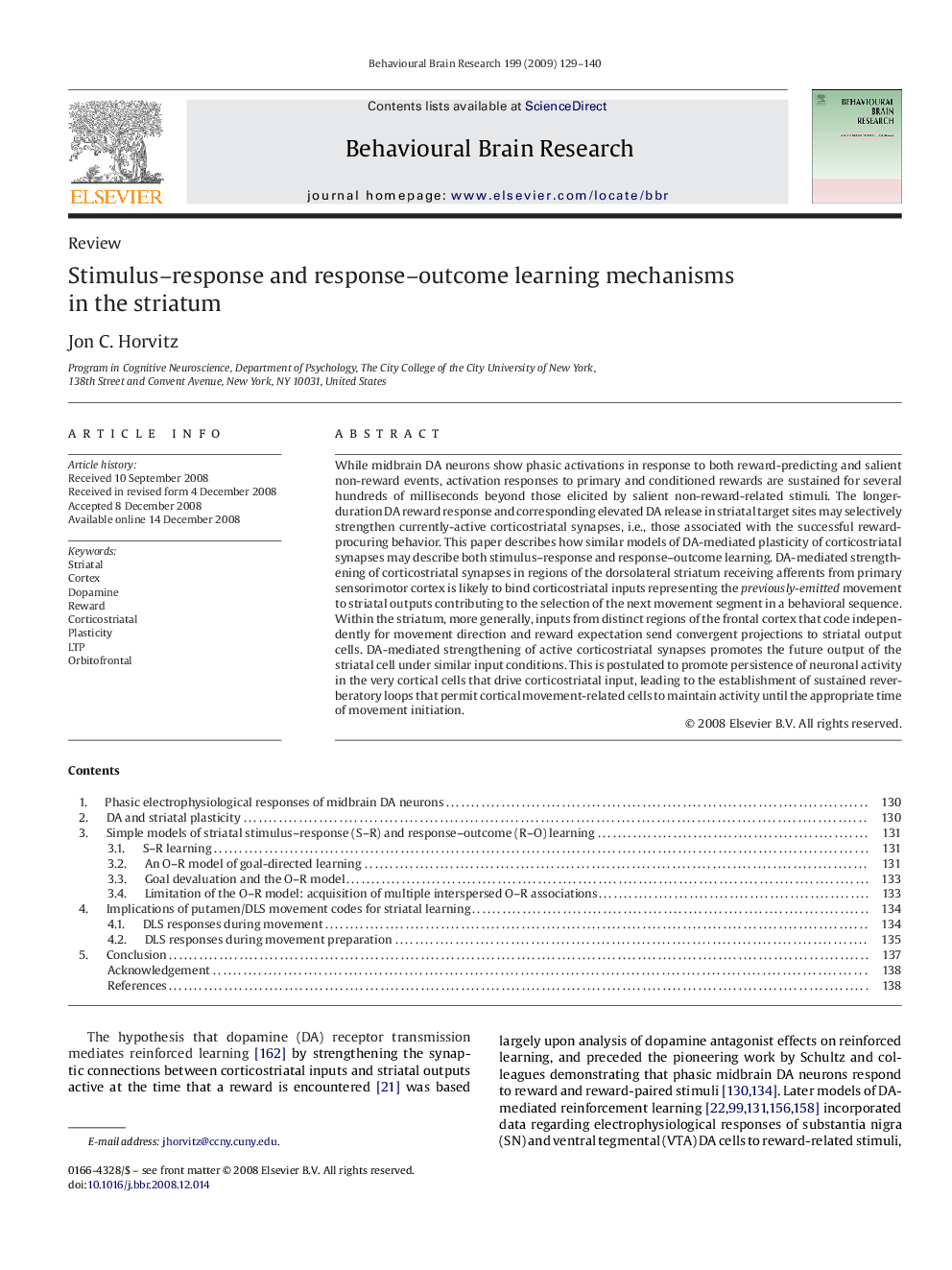| Article ID | Journal | Published Year | Pages | File Type |
|---|---|---|---|---|
| 4314851 | Behavioural Brain Research | 2009 | 12 Pages |
While midbrain DA neurons show phasic activations in response to both reward-predicting and salient non-reward events, activation responses to primary and conditioned rewards are sustained for several hundreds of milliseconds beyond those elicited by salient non-reward-related stimuli. The longer-duration DA reward response and corresponding elevated DA release in striatal target sites may selectively strengthen currently-active corticostriatal synapses, i.e., those associated with the successful reward-procuring behavior. This paper describes how similar models of DA-mediated plasticity of corticostriatal synapses may describe both stimulus–response and response–outcome learning. DA-mediated strengthening of corticostriatal synapses in regions of the dorsolateral striatum receiving afferents from primary sensorimotor cortex is likely to bind corticostriatal inputs representing the previously-emitted movement to striatal outputs contributing to the selection of the next movement segment in a behavioral sequence. Within the striatum, more generally, inputs from distinct regions of the frontal cortex that code independently for movement direction and reward expectation send convergent projections to striatal output cells. DA-mediated strengthening of active corticostriatal synapses promotes the future output of the striatal cell under similar input conditions. This is postulated to promote persistence of neuronal activity in the very cortical cells that drive corticostriatal input, leading to the establishment of sustained reverberatory loops that permit cortical movement-related cells to maintain activity until the appropriate time of movement initiation.
